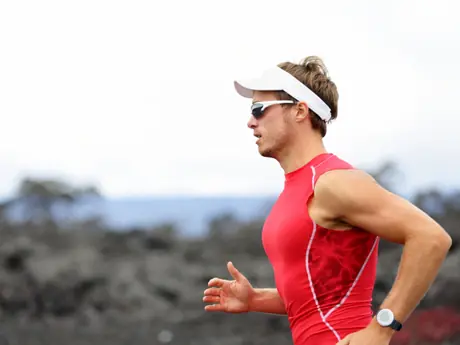
Here some key principles to look for when deciding on a strength program to boost your triathlon fitness:
1. Work Your Soft Tissue.
As a triathlete we put stress and impact on our body during training. Our muscles become tight and inflamed and it can limit our performance and increase our chances of injury. You will limit your triathlon performance if you do not improve our muscle tissue quality first.
More: 10 Self-Myofascial Release Exercises
Soft tissue work using a foam roll, massage stick or a baseball should be part of your strength program. Athletes that come through our facility start every workout with soft tissue work. It's the foundation of human movement.
"With soft tissue and flexibility issues, strength gains will be limited if we don't solve the tissue problems first", says Lee Burton, president of The Functional Movement Systems.
2. Quality Over Quantity
Just because you get sore and tired from a specific strength workout doesn't mean you're improving your triathlon fitness. In fact, hard, aggressive and random program design can actually lead you down the path of chronic pain and injury, and then you cannot do anything.
If you train to absolute failure, your form breaks down, the wrong muscles are being used and your movement will be impaired. This sets you up for injury and bad patterning down the road.
More: Weight Room or No Weight Room?
Think technical failure. Do as many repetitions as you can with absolute perfect form. Stop when the movement is no longer perfect.
If you do 100 squats, think you'll feel a burn? Absolutely. Is there a point to performing 100 squats? Not really.
A sore body doesn't necessarily mean you did something right. Clean movement enhances your functionality which sets you up to push harder in your swim, bike and run workouts, which then improves total performance.
3. Working your Core
Core is word is probably one of the most used words in the fitness industry. Proper core development teaches the entire body to cohesively work together. If our "core" has weakness, we will limit the use of our lower and upper body strength and power.
More: Stability-Ball Exercises to Build Strength and Flexibility
The inner core incorporates the Multifidis (small spinal muscles), transverse abdominals (built in "weight belt"), pelvic floor (small muscles lining the pelvis) and the diaphragm (skeletal muscle used for respiration function). These are muscles that we will never see but when functioning properly can aide in athletic development, optimal recovery, deep strength and stability and total body strength development.
Working your core is not just isometric "ab" training. Performing thousands of crunches is not considered smart "core" training. Researchers like Stuart McGill and Craig Liebenson are providing the world of athletics information on smart core training.
- 1
- of
- 2








Discuss This Article